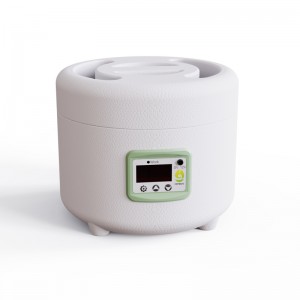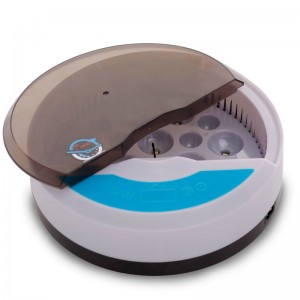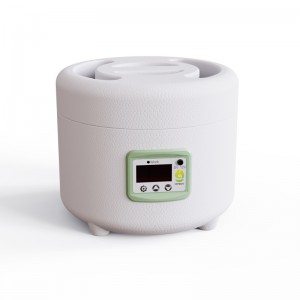CE Approved 9 Eggs Hatcher Incubator With Best Price
Features
【Automatic temperature control&display】Accurate automatic temperature control and display.
【Multifunction egg tray】Adapt to various egg shape as required
【Auto egg turning】 Auto egg turning,simulating original mother hen’s incubation mode
【Washable base】Easy to clean
【3 in 1 combination】Setter,hatcher,brooder combined
【Transparent cover 】 Observe hatching process directly at any time.
Application
Smart 12 eggs incubator is equipped with universal egg tray,able to hatch chick, duck, quail,bird,pigeon eggs etc by kids or family. Meanwhile, it can hold 12 eggs for smaller size. Small body but big energy.

Products Parameters
| Brand | WONEGG |
| Origin | China |
| Model | 9 Eggs Incubator |
| Color | White |
| Material | ABS&PC |
| Voltage | 220V/110V |
| Power | 35W |
| N.W. | 1.15KGS |
| G.W. | 1.36KGS |
| Packing Size | 30*17*30.5(CM) |
| Package | 1pc/box |
More Details
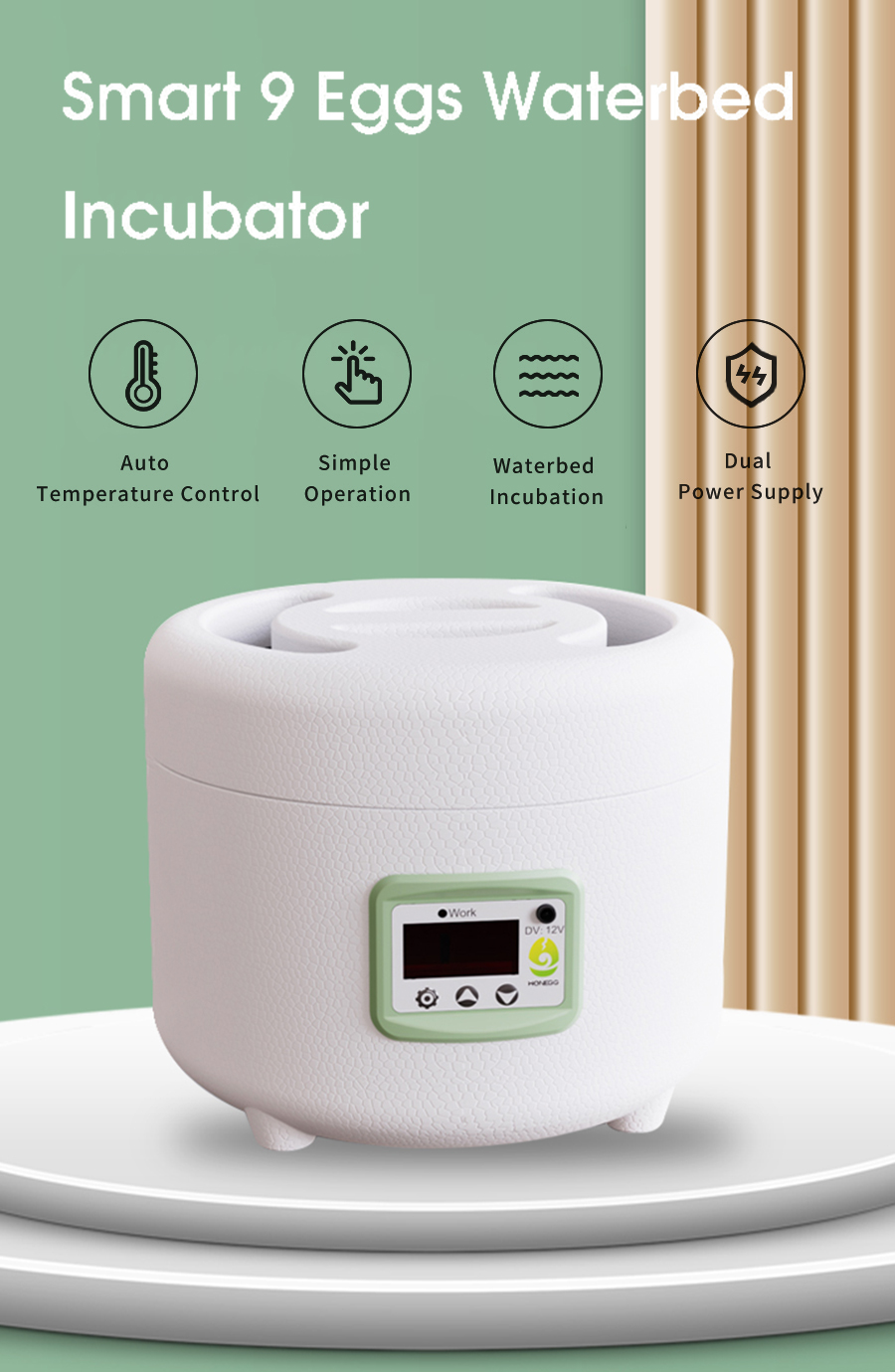
Equipped with automatic temperature control, this incubator ensures that the eggs are maintained at the optimal temperature for successful hatching. The precise temperature regulation eliminates the need for constant monitoring, giving you peace of mind and allowing you to attend to other tasks with confidence.
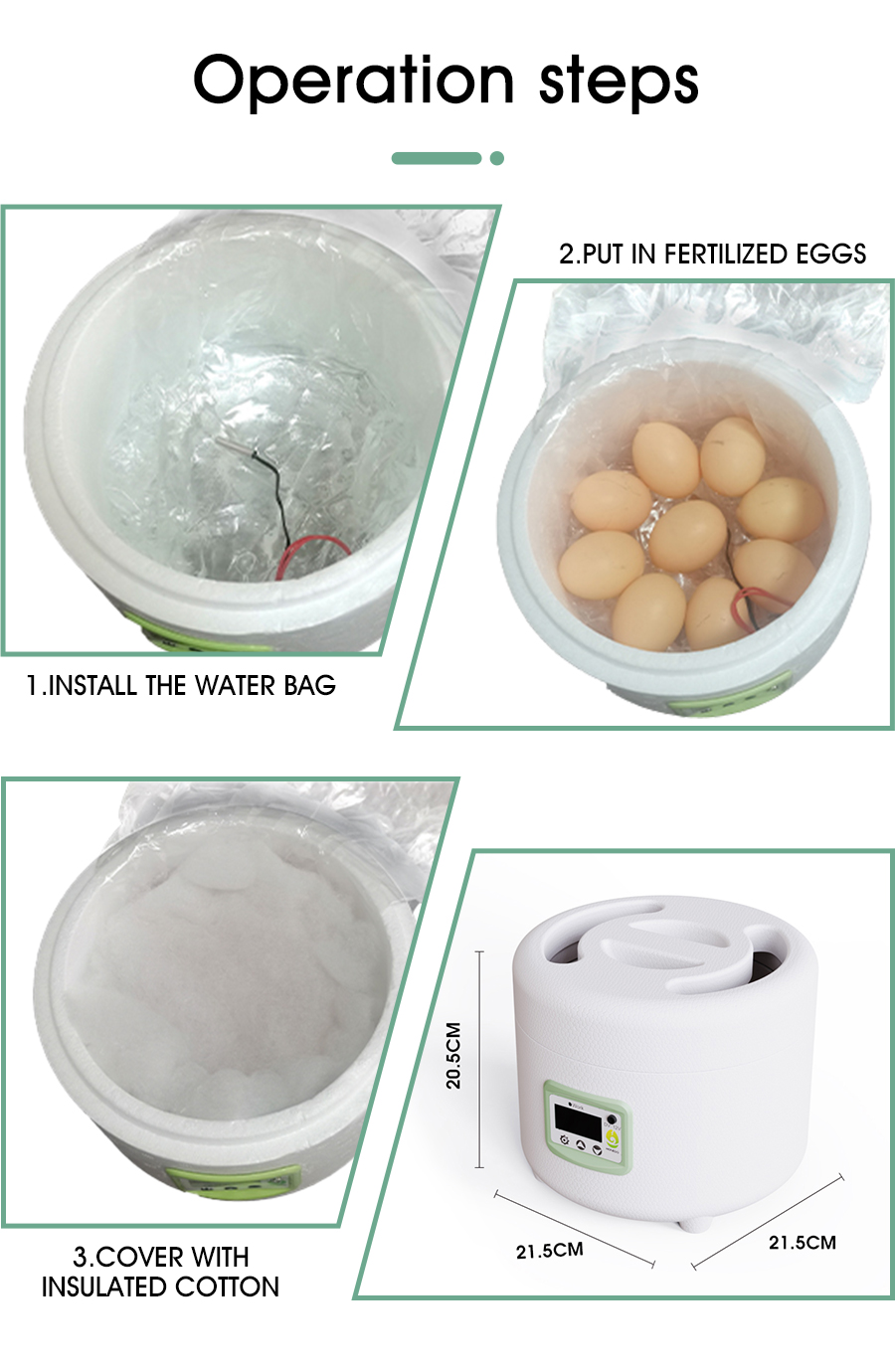
One of the standout features of the Waterbed 9 Eggs Incubator is its spacious design, providing ample room for various types of eggs. Whether you are hatching chicken, duck, quail, or other types of eggs, this incubator offers the flexibility and capacity to accommodate your specific needs, making it a versatile and practical choice for breeders with diverse interests.
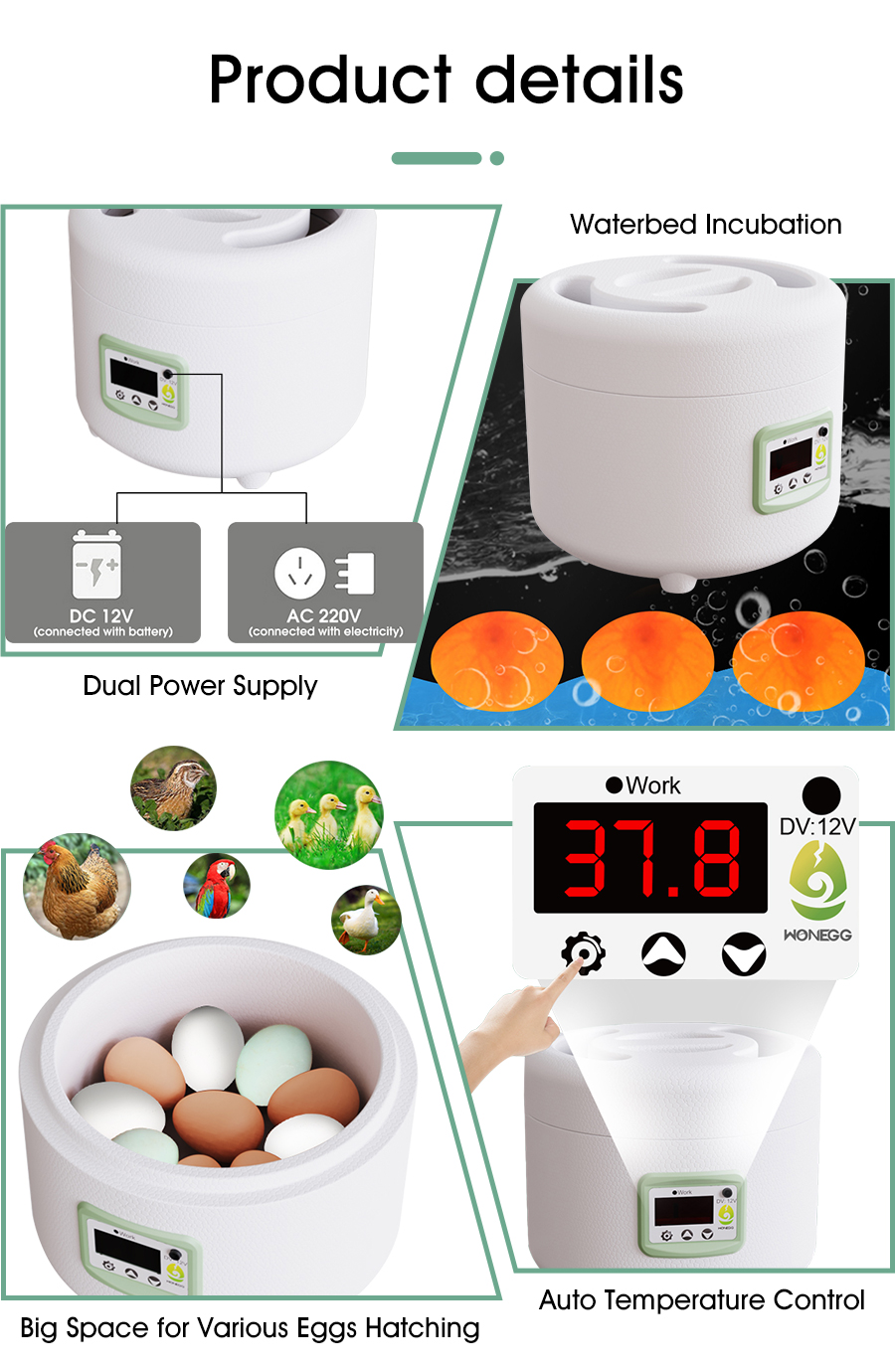
In addition to its functionality, the Waterbed 9 Eggs Incubator offers dual power supply options, with both 12V and 220V compatibility. This ensures that you can use the incubator in different settings, whether you are at home, in a professional breeding facility, or in a remote location with limited power sources. The flexibility of power supply adds to the convenience and adaptability of this incubator, making it a reliable choice for various environments.
Exception handling during hatching
1. Power outage during incubation?
Answer: Raise the temperature of the incubator, wrap it with styrofoam or cover the incubator with a quilt, and heat the water in the water tray.
2. The machine stops working during the incubation process?
Answer: The machine should be replaced in time. If the machine is not replaced, the machine should be insulated (heating devices such as incandescent lamps are placed in the machine) until the machine is repaired.
3. How many fertilized eggs die on days 1-6?
Answer: The reasons are: the incubation temperature is too high or too low, the ventilation in the incubator is not good, the eggs are not turned, the eggs are re-steamed too much, the condition of the breeding birds is abnormal, the eggs are stored for too long, the storage conditions are improper, and genetic factors.
4. Embryo death in the second week of incubation
Answer: The reasons are: high storage temperature of breeding eggs, high or low temperature in the middle of incubation, infection of pathogenic microorganisms from maternal origin or from eggshells, poor ventilation in the incubator, malnutrition of breeders, vitamin deficiency, abnormal egg transfer , Power outage during incubation.
5. The young chicks are fully formed, retain a large amount of unabsorbed yolk, do not peck the shell, and die in 18--21 days
Answer: The reasons are: the humidity of the incubator is too low, the humidity in the hatching period is too high or low, the incubation temperature is improper, the ventilation is poor, the temperature in the hatching period is too high, and the embryos are infected.
6. The shell is pecked, and the chicks are unable to expand the peck hole
Answer: The reasons are: too low humidity during hatching, poor ventilation during hatching, short-term over-temperature, low temperature, and infection of embryos.
7. The pecking stops midway, some young chicks die, and some are still alive
Answer: The reasons are: low humidity during hatching, poor ventilation during hatching, and excessive temperature in a short period of time.
8. chicks and shell membrane adhesion
Answer: The moisture of the hatching eggs evaporates too much, the humidity during the hatching period is too low, and the egg turning is not normal.
9. The hatching time is delayed for a long time
Answer: Improper storage of breeding eggs, large eggs and small eggs, fresh eggs and old eggs are mixed together for incubation, the temperature is maintained at the maximum temperature limit and the minimum temperature limit for too long during the incubation process, and the ventilation is poor.
10. Eggs burst before and after 12-13 days of incubation
Answer: The eggshell is dirty, the eggshell is not cleaned, bacteria invades the egg, and the egg is infected in the incubator.
11. Embryo hatching is difficult
Answer: If it is difficult for the embryo to emerge from the shell, it should be artificially assisted. During the midwifery, the egg shell should be gently peeled off to protect the blood vessels. If it is too dry, it can be moistened with warm water before peeling off. Once the head and neck of the embryo are exposed, it is estimated that it can break free on its own. When the shell comes out, the midwifery can be stopped, and the egg shell must not be forcibly peeled off.
12. Humidification precautions and humidification skills:
a. The machine is equipped with a humidifying water tank at the bottom of the box, and some boxes have water injection holes under the side walls.
b. Pay attention to the humidity reading and fill the water channel when needed. (usually every 4 days - once)
c. When the set humidity cannot be achieved after working for a long time, it means that the humidification effect of the machine is not ideal, and the ambient temperature is too low, the user should check
Whether the upper cover of the machine is properly covered, and whether the casing is cracked or damaged.
d. In order to enhance the humidification effect of the machine, if the above conditions are excluded, the water in the water tank can be replaced with warm water, or an auxiliary such as a sponge or a sponge that can increase the water volatilization surface can be added to the water tank to assist the volatilization of water.





